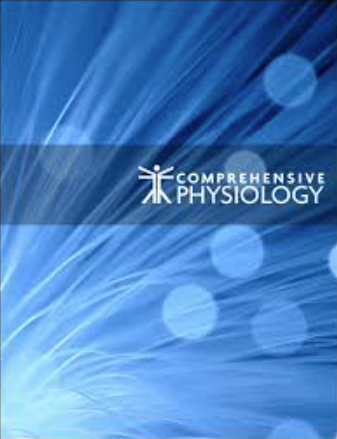下载PDF
{"title":"肝脏疾病病理生理学中的氧化应激和氧化还原信号转导。","authors":"Raja Gopal Reddy Mooli, Dhanunjay Mukhi, Sadeesh K Ramakrishnan","doi":"10.1002/cphy.c200021","DOIUrl":null,"url":null,"abstract":"<p><p>The increased production of derivatives of molecular oxygen and nitrogen in the form of reactive oxygen species (ROS) and reactive nitrogen species (RNS) lead to molecular damage called oxidative stress. Under normal physiological conditions, the ROS generation is tightly regulated in different cells and cellular compartments. Any disturbance in the balance between the cellular generation of ROS and antioxidant balance leads to oxidative stress. In this article, we discuss the sources of ROS (endogenous and exogenous) and antioxidant mechanisms. We also focus on the pathophysiological significance of oxidative stress in various cell types of the liver. Oxidative stress is implicated in the development and progression of various liver diseases. We narrate the master regulators of ROS-mediated signaling and their contribution to liver diseases. Nonalcoholic fatty liver diseases (NAFLD) are influenced by a \"multiple parallel-hit model\" in which oxidative stress plays a central role. We highlight the recent findings on the role of oxidative stress in the spectrum of NAFLD, including fibrosis and liver cancer. Finally, we provide a brief overview of oxidative stress biomarkers and their therapeutic applications in various liver-related disorders. Overall, the article sheds light on the significance of oxidative stress in the pathophysiology of the liver. © 2022 American Physiological Society. Compr Physiol 12:3167-3192, 2022.</p>","PeriodicalId":10573,"journal":{"name":"Comprehensive Physiology","volume":"12 2","pages":"3167-3192"},"PeriodicalIF":5.2000,"publicationDate":"2022-03-29","publicationTypes":"Journal Article","fieldsOfStudy":null,"isOpenAccess":false,"openAccessPdf":"https://www.ncbi.nlm.nih.gov/pmc/articles/PMC10074426/pdf/nihms-1880813.pdf","citationCount":"0","resultStr":"{\"title\":\"Oxidative Stress and Redox Signaling in the Pathophysiology of Liver Diseases.\",\"authors\":\"Raja Gopal Reddy Mooli, Dhanunjay Mukhi, Sadeesh K Ramakrishnan\",\"doi\":\"10.1002/cphy.c200021\",\"DOIUrl\":null,\"url\":null,\"abstract\":\"<p><p>The increased production of derivatives of molecular oxygen and nitrogen in the form of reactive oxygen species (ROS) and reactive nitrogen species (RNS) lead to molecular damage called oxidative stress. Under normal physiological conditions, the ROS generation is tightly regulated in different cells and cellular compartments. Any disturbance in the balance between the cellular generation of ROS and antioxidant balance leads to oxidative stress. In this article, we discuss the sources of ROS (endogenous and exogenous) and antioxidant mechanisms. We also focus on the pathophysiological significance of oxidative stress in various cell types of the liver. Oxidative stress is implicated in the development and progression of various liver diseases. We narrate the master regulators of ROS-mediated signaling and their contribution to liver diseases. Nonalcoholic fatty liver diseases (NAFLD) are influenced by a \\\"multiple parallel-hit model\\\" in which oxidative stress plays a central role. We highlight the recent findings on the role of oxidative stress in the spectrum of NAFLD, including fibrosis and liver cancer. Finally, we provide a brief overview of oxidative stress biomarkers and their therapeutic applications in various liver-related disorders. Overall, the article sheds light on the significance of oxidative stress in the pathophysiology of the liver. © 2022 American Physiological Society. Compr Physiol 12:3167-3192, 2022.</p>\",\"PeriodicalId\":10573,\"journal\":{\"name\":\"Comprehensive Physiology\",\"volume\":\"12 2\",\"pages\":\"3167-3192\"},\"PeriodicalIF\":5.2000,\"publicationDate\":\"2022-03-29\",\"publicationTypes\":\"Journal Article\",\"fieldsOfStudy\":null,\"isOpenAccess\":false,\"openAccessPdf\":\"https://www.ncbi.nlm.nih.gov/pmc/articles/PMC10074426/pdf/nihms-1880813.pdf\",\"citationCount\":\"0\",\"resultStr\":null,\"platform\":\"Semanticscholar\",\"paperid\":null,\"PeriodicalName\":\"Comprehensive Physiology\",\"FirstCategoryId\":\"3\",\"ListUrlMain\":\"https://doi.org/10.1002/cphy.c200021\",\"RegionNum\":2,\"RegionCategory\":\"医学\",\"ArticlePicture\":[],\"TitleCN\":null,\"AbstractTextCN\":null,\"PMCID\":null,\"EPubDate\":\"\",\"PubModel\":\"\",\"JCR\":\"Q1\",\"JCRName\":\"PHYSIOLOGY\",\"Score\":null,\"Total\":0}","platform":"Semanticscholar","paperid":null,"PeriodicalName":"Comprehensive Physiology","FirstCategoryId":"3","ListUrlMain":"https://doi.org/10.1002/cphy.c200021","RegionNum":2,"RegionCategory":"医学","ArticlePicture":[],"TitleCN":null,"AbstractTextCN":null,"PMCID":null,"EPubDate":"","PubModel":"","JCR":"Q1","JCRName":"PHYSIOLOGY","Score":null,"Total":0}
引用次数: 0
引用
批量引用



 求助内容:
求助内容: 应助结果提醒方式:
应助结果提醒方式:


